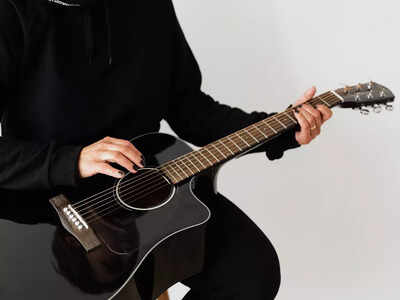Are you an aspiring rock-star looking to get a jump-start on how to play metal on your electric guitar? From beginners to seasoned professionals, this guide will provide helpful information on key techniques and concepts necessary for playing metal. With simple explanations and step-by-step directions, you can learn the basics of metal music with guitar in no time.
- Chords:
When playing chords, a few core components should be kept in mind. First, there are three types of chord shapes—major, minor, and power chords—that all have specific characteristics and sound qualities. Additionally, each chord requires a particular fingering pattern that must be practiced to sound cleanly when strummed. Lastly, understanding why different notes interact with each other will help you better comprehend chord construction.
- Scales:
Pentatonic scales are highly versatile and often found in many styles of music, including classical, folk, and rock genres. They are also used extensively in classic heavy metal solos from some of the greatest guitarists like Jimi Hendrix, Randy Rhoads, Tony Iommi, and Eddie Van Halen. Understanding this scale will allow you to easily create melodic licks that sound great with any metal music style.

- Amplification:
An important part of getting the desired sound from your guitar is through amplifiers and speakers. It’s essential to understand what type of amplifier works with your instrument and which speaker cabinet produces the best tone. Combining these two components will ensure maximum clarity in your notes and provide you with the ideal metal tone. Also, effects pedals can add further depth and character to a performance or recording session – making it easier for you to create a unique sound palette suited specifically for playing metal music!
- Techniques:
Hammer Ons and Pull Offs are two essential techniques electric guitar players use, particularly those who use their instrument to play metal. Hammer Ons involves pressing down a fret with the left hand without plucking the string. Doing so produces an instant increase in volume and creates a smooth transition from one note to another. Pull-offs are the opposite of hammer-ons, involving pulling a string off a fret with the left hand while plucking it with the right.
- Tuning:
Tuning your electric guitar correctly is essential for playing metal music with guitar. Whether you’re looking to achieve that chugging breakdown riff sound or want to shred through the fastest of solos, having the right tuning can make all the difference. Drop D is a popular tuning for metal guitarists, but there are other options
Drop D allows you to get a thicker sound by lowering the sixth string of your instrument down one whole step from E to D while keeping all other strings as they were in standard tuning. This new arrangement makes it easier to form power chords with just one finger and create heavy riffs quickly and easily.






